Lille is a vibrant, multicultural city located in northern France, close to the Belgian border. As the capital of the Hauts-de-France region, it lies within a triangle formed by Paris (220 km south), Brussels (110 km northeast), and London (via Eurostar, 1.5 hours west). Its location at this European crossroads makes Lille not only easy to reach but historically significant as well.
Lille is nestled along the Deûle River, which flows into the Lys and eventually joins the Scheldt River, a vital waterway in European trade. While it’s a relatively compact city, its influence spans centuries—shaped by Flemish, Spanish, and French rule.
Top Attractions & Landmarks in Lille
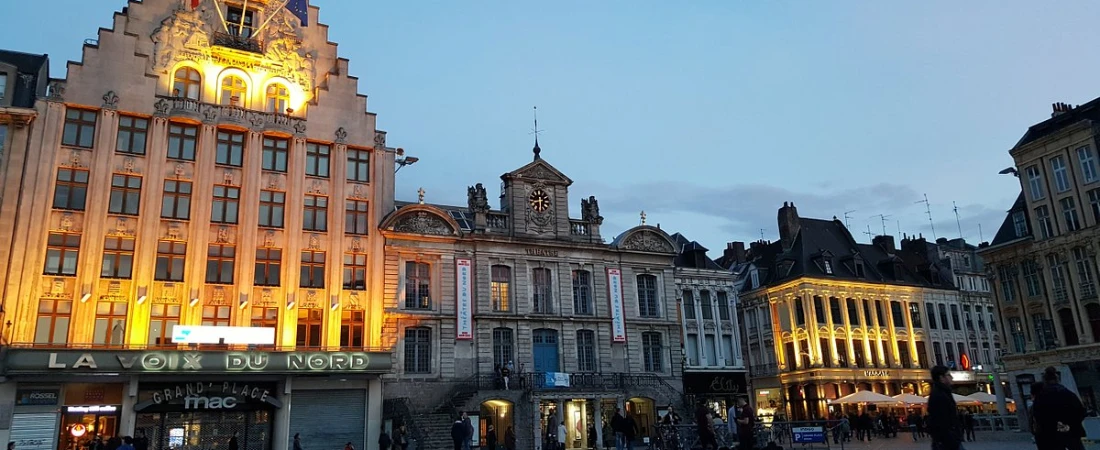
Lille is a city layered with centuries of architecture, culture, and civic pride. From Flemish façades to grand civic squares and cutting-edge museums, the city’s landmarks are both photogenic and rich in meaning. Whether you’re here for a weekend or a week, these are the attractions that deserve a spot at the top of your itinerary.
Grand Place (Place du Général-de-Gaulle)
At the heart of Lille lies the Grand Place, the central square that’s been the city’s beating heart for centuries. Surrounded by ornate Flemish and classical buildings, it serves as a natural meeting point for locals and visitors alike.
The square is named after Charles de Gaulle, who was born in Lille in 1890. At its center stands the Column of the Goddess, commemorating the city's resistance to the Austrian siege of 1792. Around the square, you’ll find colorful buildings such as La Voix du Nord headquarters (a regional newspaper) with its Gothic spire, and the Théâtre du Nord, housed in an old stock exchange building.
Traveler Tip: Visit in the evening when the square lights up and cafés fill with people. In winter, it hosts the Christmas market and a giant Ferris wheel.
Vieille Bourse (Old Stock Exchange)
Located directly on Grand Place, the Vieille Bourse is one of Lille’s architectural masterpieces. Built between 1652 and 1653, it consists of 24 identical houses forming a quadrangle around a central courtyard.
Each façade is richly decorated in Flemish Renaissance style—with red brick, golden detailing, and mythological sculptures. Inside the courtyard, you’ll find second-hand bookstalls, chess players, and occasional concerts or tango nights. The atmosphere is lively but never overwhelming.
Visitor Tip: Entrance is free. Come mid-morning when the sun shines into the inner courtyard for the best photo opportunities.
Palais des Beaux-Arts de Lille
Lille’s premier fine arts museum, the Palais des Beaux-Arts, is considered one of the largest and most prestigious art institutions in France outside of Paris. Located at Place de la République, the building is imposing with its Beaux-Arts style façade and grand interiors.
The museum's collection spans works from Rubens, Delacroix, Goya, Monet, and Van Gogh, among others. It also houses sculpture, ceramics, drawings, and an incredible set of 18th-century relief maps of fortified cities created for Louis XIV.
Traveler Tip: Reserve at least 2 hours. Admission is free on the first Sunday of every month. There’s also a nice café and bookshop inside.
Citadel of Lille (La Citadelle)
Built in the 17th century by Vauban, Louis XIV’s military engineer, the Citadel of Lille is a pentagon-shaped fortress surrounded by moats, canals, and parkland. While the fortress itself is still used by the French military and isn’t open for casual visitors, the grounds around it are a haven for locals.
The surrounding Parc de la Citadelle is Lille’s largest green space. You’ll find walking trails, a children’s playground, a small zoo, a lake for rowing, and plenty of shaded picnic spots.
Traveler Tip: Rent a bike or walk along the Deûle Canal that winds through the park. The paths are flat and tree-lined—perfect for relaxing.
Notre-Dame de la Treille Cathedral
Unlike most French cathedrals, Notre-Dame de la Treille is both ancient and modern. Built over 150 years and completed in 1999, it features a neo-Gothic structure with a modern marble-and-glass façade that glows in the sunlight.
Inside, the cathedral is calm and understated. Look for the statue of the Virgin of the Treille, a local religious symbol, and the stained glass windows created by contemporary artists.
Address: 5 Place Gilleson
Tip: Don’t miss the art space and crypt beneath the cathedral, often used for local exhibitions.
Hospice Comtesse Museum
Hidden within the Old Town, the Hospice Comtesse is a former 13th-century hospital turned museum. Founded by Countess Jeanne of Flanders, it gives visitors a glimpse into Lille’s medieval past.
The museum contains religious art, tapestries, traditional Flemish furniture, and old hospital equipment. The building itself—with timber framing, cloisters, and a medicinal garden—is a sight to behold.
Traveler Tip: It’s less crowded than the larger museums and great for history lovers or those seeking a quieter experience.
Lille’s City Hall and Belfry (Beffroi de l’Hôtel de Ville)
Located at Place Roger Salengro, the Hôtel de Ville is a striking red-brick and Art Deco building crowned with a 104-meter belfry—France’s tallest municipal building. Built in the 1920s, its style merges Flemish traditions with modern elegance.
Climb or take the elevator up the belfry for panoramic views over the city. It’s a UNESCO World Heritage Site and provides an unmatched photo opportunity, especially on a clear day.
Tip: Go in the morning for better visibility. Admission to the tower is very affordable and well worth it.
Gare Saint Sauveur – Cultural & Creative Hub
What was once an old train station is now one of Lille’s most exciting cultural centers. Gare Saint Sauveur hosts contemporary art exhibitions, concerts, pop-up restaurants, outdoor film screenings, and family-friendly events.
Its industrial interior is contrasted with greenery and bright murals, while the outdoor space is lined with lounge chairs and food stalls. It’s a favorite among locals for casual gatherings.
Traveler Tip: Entry is free, and the programming changes often—so check ahead. Perfect for an afternoon coffee and art stroll.
Porte de Paris
This triumphal arch was built between 1685 and 1692 to celebrate Louis XIV’s capture of Lille from the Spanish. Located near the Hôtel de Ville, the Porte de Paris resembles a smaller Arc de Triomphe and is one of the best examples of classical military architecture in the city.
It’s surrounded by a small park and gardens, perfect for a quick break or photography stop. Its intricate sculptures and royal inscriptions make it a symbolic entrance to central Lille.
Tip: Visit in the early morning or late afternoon for great light and fewer crowds.
Maison Natale Charles de Gaulle (Charles de Gaulle’s Birthplace)
One of France’s most iconic historical figures, General Charles de Gaulle, was born in Lille in 1890. His family home, located at 9 Rue Princesse, has been preserved as a museum.
The Maison Natale Charles de Gaulle offers personal artifacts, family photos, and insights into his early life and military career. The house itself is charming, with typical Flemish architectural details.
Local Cuisine & Dining Experiences in Lille
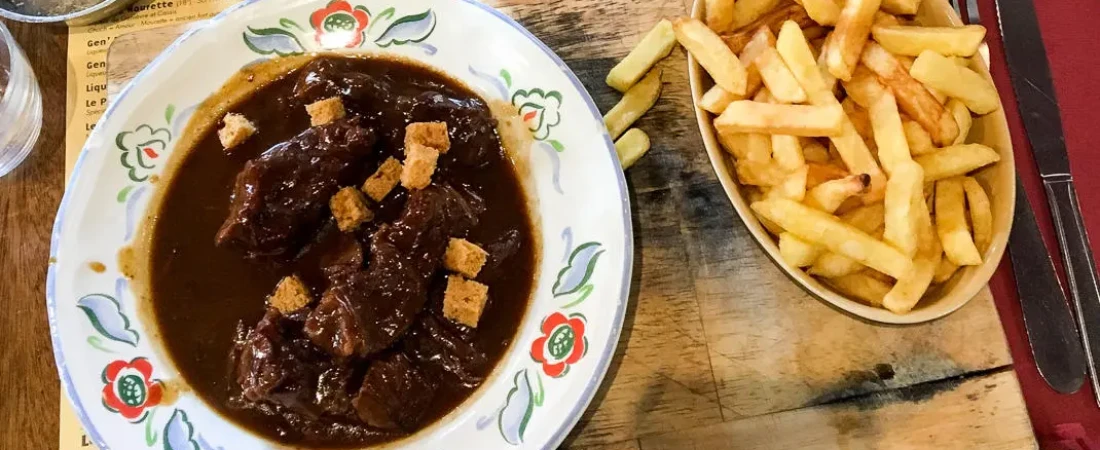
Lille's culinary identity is a delicious reflection of its Flemish and French roots, hearty northern climate, and proximity to Belgium. Think rich stews, aged cheeses, sweet waffles, and pints of local beer served in warm, wood-lined estaminets. Whether you're a gourmet traveler or a casual food lover, Lille offers unforgettable meals that are both comforting and characterful.
Signature Dishes You Must Try
Carbonnade Flamande
This is Lille's ultimate comfort food: a beef stew slow-cooked in dark beer with onions, mustard, and often a hint of gingerbread. It's typically served with fries or mashed potatoes, soaking up the thick, caramelized sauce. Rich, sweet, and savory all at once, it’s a must-have in winter—or any time you're craving something soul-satisfying.
Welsh
Not to be confused with Welsh rarebit, Lille’s version involves bread soaked in beer, covered with melted cheddar, ham, and mustard, then baked until bubbling. It’s often served with fries and is beloved by students and locals alike.
Maroilles Cheese Dishes
Maroilles is a pungent, washed-rind cheese from northern France with a creamy texture and nutty flavor. Try it in tartes, quiches, or gratin dishes, or even just as a cheese course with rustic bread.
Moules-Frites
Though often associated with Belgium, mussels with fries are a staple in Lille too—especially in estaminets near Wazemmes or Vieux-Lille. Mussels are often cooked with white wine, garlic, cream, or beer.
Gaufres (Waffles)
Lille is known for a specific type of thin, filled waffle, especially those made famous by Méert, which come filled with Madagascar vanilla cream. Crispy on the outside, chewy inside, and delicately sweet, they're a favorite souvenir.
Top Places to Eat in Lille
Estaminet ‘T Rijsel – Rue de Gand
This rustic, Flemish-style tavern is a local institution. With wooden beams, ceramic jugs, and vintage posters, it’s the perfect setting for enjoying carbonnade flamande, Welsh, or rabbit with prunes. Portions are generous and beer options are abundant.
Méert – 27 Rue Esquermoise
Founded in 1761, Méert is the most iconic patisserie in Lille. Its gilded walls, ornate mirrors, and impeccable desserts make it both a historical and culinary experience. Aside from its famous gaufres, you’ll find eclairs, chocolates, and a regal tea room perfect for a late afternoon break.
Chez la Vieille – Vieux-Lille
Tucked inside the Old Town, this cozy spot serves up traditional northern dishes in a warm, wood-paneled setting. Their beer menu is as strong as their stews, and it’s a local favorite for good reason.
Le Broc – 39 Place Louise de Bettignies
Cheese lovers, rejoice. Le Broc specializes in raclette, fondue, and all things gooey and delicious. Ideal for cold evenings or a hearty group dinner.
Bloempot – 22 Rue des Bouchers
A modern take on Flemish cuisine, this trendy spot is run by a Michelin-starred chef. Ingredients are locally sourced, dishes are beautifully plated, and the menu changes frequently. It’s a bit pricier, but worth the experience if you're after fine dining with a local twist.
Markets and Street Food
Wazemmes Market – Place de la Nouvelle Aventure
Held on Tuesdays, Thursdays, and Sundays, this is Lille’s largest and most colorful market. You’ll find cheese stalls, charcuterie, pastries, spices, and street vendors selling sandwiches, couscous, and galettes. Sundays are the busiest, offering a lively, multicultural vibe with music and fresh produce.
Tip: Go early for the best selection, and bring cash. Try a hot Moroccan mint tea with a honey-soaked pastry from a food truck nearby.
Sweet Treats & Local Desserts
Gaufres de Lille
As mentioned, Lille’s waffles are legendary. Soft and sugary with fillings like vanilla, praline, or chocolate, they’re different from Belgian waffles and often individually wrapped—perfect for taking home.
Tarte au Sucre
This “sugar tart” is made from brioche dough, topped with brown sugar, cream, and butter. It’s sweet, sticky, and very northern.
Merveilleux
A meringue-based dessert coated in whipped cream and rolled in chocolate shavings or other toppings. Available in many bakeries, especially at Aux Merveilleux de Fred.
Beer, Wine & Local Drinks
Lille has a thriving beer culture, influenced heavily by Belgium. Local brewers make blonde ales, ambers, strong dark beers, and fruit-infused varieties.
Where to Taste:
- La Capsule (Rue des Trois Mollettes): Craft beer haven with 20+ rotating taps.
- Beer Square (Place de la Gare): Ideal for post-train tasting.
- Brasserie Tandem: Local microbrewery offering tastings and guided visits.
Not into beer?
- Try Picon Bière, a popular bitter orange liqueur added to lager, or go for regional apple ciders and sweet wines from Alsace.
Vegetarian and Vegan Dining in Lille
While traditional cuisine is quite meat-heavy, Lille has increasingly embraced plant-based options.
Top Choices:
- La Clairière: 100% vegetarian, organic meals with local produce.
- Tamper! Espresso Bar: Great for vegan brunches, coffees, and bowls.
- It’s Green: Popular lunch spot with wraps, salads, and homemade desserts.
Many restaurants now have vegetarian options, and even estaminets are starting to offer cheese-based or veggie dishes upon request.
Food Festivals & Seasonal Events
La Braderie de Lille (September)
Europe’s biggest flea market is also a food paradise. Alongside antiques, you'll find moules-frites stands, beer stalls, and pop-up estaminets. Over 500 tons of mussels are eaten during this weekend!
Christmas Market (Late November–December)
Held in Grand Place, the Lille Christmas Market features local cheese, gingerbread, vin chaud (mulled wine), Belgian chocolates, and hand-crafted delicacies.
Lille Street Food Festival
Hosted at Gare Saint Sauveur, this urban food event offers modern twists on traditional dishes, with food trucks, DJs, and open-air tastings.
Dining Tips for Visitors
- Meal Times: Lunch is typically from 12–2 pm, and dinner starts around 7:30–8 pm. Many restaurants close between lunch and dinner.
- Reservations: Always book ahead for estaminets and popular places, especially on weekends.
- Menus: Look for “Formule” menus at lunch—set meals offering good value (starter + main or main + dessert).
- Tipping: Service is included, but rounding up or leaving a few euros is appreciated.
- Language: Some menus are only in French. A few key food words or a translation app can help, but most servers in tourist areas are used to English-speaking guests.
Culture, Museums & Arts in Lille
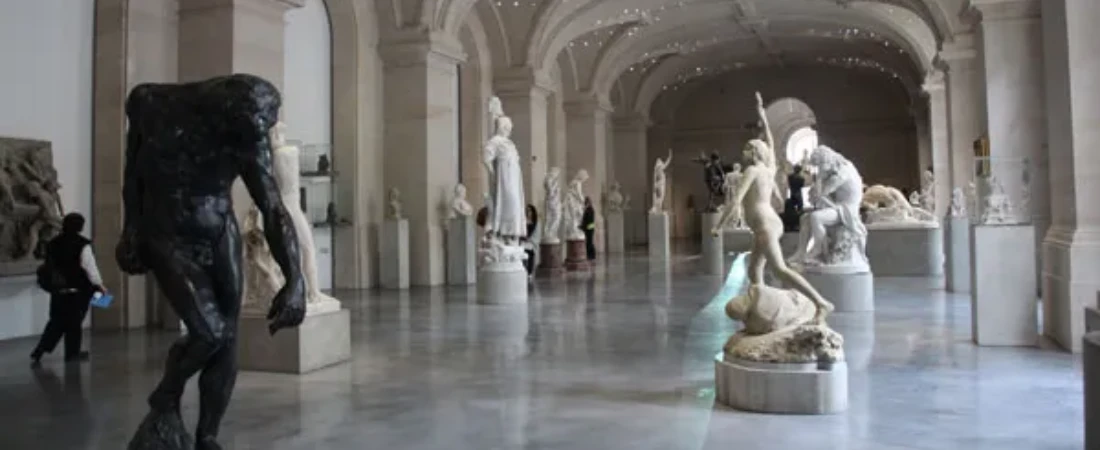
Lille isn't just a city of architecture and waffles — it's also a cultural powerhouse. From baroque masterpieces to avant-garde exhibitions, comic art, classical opera, and industrial buildings reborn as modern galleries, the city pulses with creativity. Lille’s unique cultural identity stems from its Flemish heritage, industrial past, and university town dynamism, resulting in a mix that feels deeply rooted yet refreshingly modern.
A City Built on Culture and Identity
Lille's culture is hard to categorize, which is exactly what makes it compelling. It’s part French, part Flemish, with Belgian influences visible in both its buildings and its mindset. The locals take pride in their northern resilience, and Lille has reinvented itself time and again—from medieval trading hub to 19th-century industrial titan to a 21st-century center of education and the arts.
In 2004, Lille was named European Capital of Culture, which sparked a cultural transformation across the city. This legacy lives on in the form of vibrant art spaces, festivals, theaters, and public art.
Palais des Beaux-Arts de Lille
Located at Place de la République, this is Lille’s flagship art institution and one of the largest fine arts museums in France, second only to the Louvre in terms of volume.
Highlights:
- Paintings by Rubens, Goya, Delacroix, Van Dyck, Raphael, and Monet.
- A vast collection of 18th-century military relief maps used by Louis XIV.
- A dynamic temporary exhibition schedule ranging from ancient artifacts to cutting-edge contemporary work.
The building itself is a stunning Beaux-Arts masterpiece with dramatic arches, marble halls, and glass ceilings. It's an essential stop for anyone interested in European art history.
La Piscine – Musée d’Art et d’Industrie André Diligent (Roubaix)
Located just 15–20 minutes from central Lille by metro in Roubaix, La Piscine is one of France’s most beautiful and unique museums. Housed in a former Art Deco swimming pool, it fuses art, fashion, design, and industrial history.
Artworks are displayed beside the preserved pool under golden stained glass windows. Sculptures line the "pool deck," while galleries inside the locker rooms house textiles, ceramics, and paintings.
Tip: Visit on a weekday afternoon to enjoy the calm, meditative atmosphere.
LaM – Lille Métropole Museum of Modern, Contemporary & Outsider Art
Located in Villeneuve-d’Ascq, about 25 minutes from the city center, LaM is a must for lovers of 20th- and 21st-century art.
The museum houses work by Modigliani, Picasso, Kandinsky, and Braque, alongside an impressive collection of Art Brut (outsider art). It’s set in a peaceful sculpture park ideal for sunny days and quiet reflection.
Gare Saint Sauveur – Industrial Culture Reborn
This former train station turned cultural complex has become a center for contemporary art, family events, and urban creativity. Located south of the city center, it features:
- Large-scale art exhibitions
- Outdoor concerts and screenings
- Food courts, bars, and picnic spots
- Weekend events for kids and adults
The programming changes often, ranging from immersive digital exhibits to photography, cinema, and experimental installations.
Hospice Comtesse Museum
In the heart of Vieux-Lille lies this elegant museum, once a medieval hospital founded in 1237. It now presents Lille’s religious, domestic, and social history, featuring:
- Flemish tapestries and paintings
- Religious artifacts
- Antique furniture and ceramics
- A re-created apothecary and infirmary
The building itself — with its Gothic chapel, inner courtyard, and medicinal garden — offers a rare look into the city’s past.
Street Art & Creative Spaces
Lille’s art isn’t confined to museums. The city has embraced urban art and open-air expression. Neighborhoods like Moulins, Wazemmes, and around Gare Saint Sauveur display colorful murals, graffiti, and installations on building walls, train cars, and fences.
Independent galleries and workshops like L’Huîtrière or Le Non-Lieu host performances, exhibitions, and artist residencies in former factories and warehouses—keeping Lille’s industrial soul alive through creativity.
Performing Arts & Music
Opéra de Lille
An exquisite neo-classical building near Grand Place, the Opera House offers an annual calendar of:
- Opera performances
- Classical concerts
- Contemporary dance
The interior is ornate and intimate. Tickets can range from high-end to student-friendly, and you can even tour the venue on select days.
Théâtre du Nord
- Housed in a former stock exchange on Grand Place, this venue hosts French-language theatre, both classical and modern, often with English subtitles during festivals.
Concert Venues
- Zénith Arena: For large international concerts
- Aéronef: Live indie, pop, and electro acts
- Le Biplan and La Cave aux Poètes: Smaller venues with jazz, experimental, or local artists
Festivals and Annual Events
Lille’s culture calendar is packed with events that bring the city to life in spectacular ways:
Lille 3000
An arts festival born from Lille’s 2004 Capital of Culture title. Every few years, Lille 3000 presents months of exhibitions, light shows, concerts, and street performances across the city. Each edition has a new theme (e.g., Fantastic, Renaissance, Eldorado).
Braderie de Lille (First Weekend of September)
More than a flea market, this is a cultural event involving music, food, and spontaneous art exhibitions. Streets become performance spaces, and musicians and artists pop up throughout the city.
Festival International du Court Métrage
A short film festival held each March showcasing innovative global cinema and offering a platform for new filmmakers.
Lille Piano(s) Festival
Held in June, this classical music event brings renowned pianists to perform in concert halls and public spaces throughout the city.
Comics and Graphic Art Scene
Lille has a strong tradition in bande dessinée (comics), and it hosts comic art events, exhibitions, and specialty shops year-round. Students of visual arts and design have brought a wave of graphic creativity to the city.
Check out:
- Librairie Astro City for rare comics
- Comic exhibitions at Saint Sauveur
- Independent artists displaying works during open studio weekends
Cultural Centers for All Ages
Lille’s cultural scene is inclusive and multi-generational. Several spaces are designed to engage kids, teens, and families in creative learning:
- Maisons Folie: Former textile factories turned into art and music hubs
- Forum des Sciences: Interactive science center for kids
- Médiathèque Jean-Lévy: Public library with youth reading and cultural programs
You’ll find storytelling sessions, hands-on workshops, and music festivals designed to foster cultural curiosity at any age.
Shopping & Markets in Lille
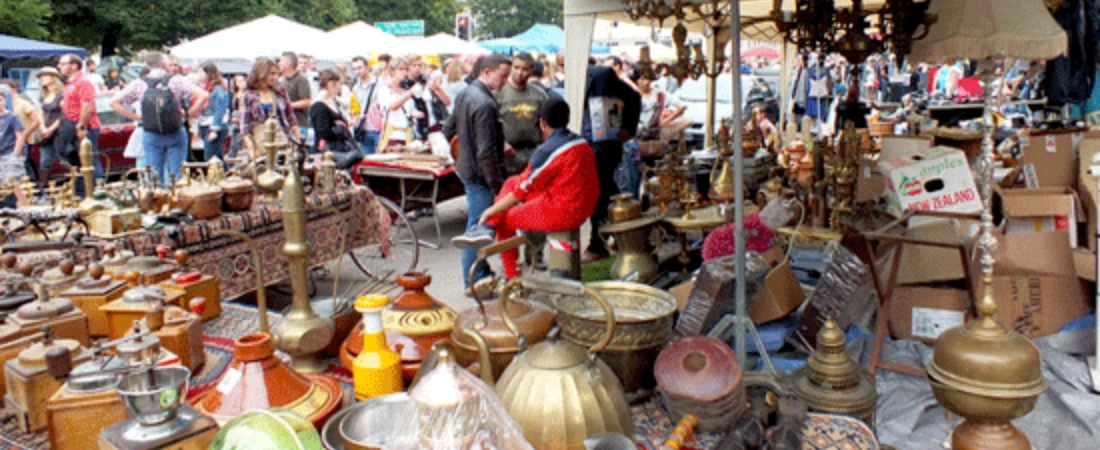
Shopping in Lille is an experience that blends style, heritage, and authenticity. Whether you're looking for designer fashion, handcrafted goods, rare antiques, or local delicacies, the city offers a wide variety of options—from elegant boutiques in Vieux-Lille to modern malls and bustling outdoor markets. And with its Flemish roots and creative energy, Lille brings a unique flair to everything it sells.
Rue de la Grande Chaussée – The High-End Fashion Street
Known as the "Golden Triangle" of Lille, this elegant street is where you’ll find the big-name luxury boutiques and French designer labels. Located near the Grand Place and Opéra, this area caters to fashionistas and window shoppers alike.
Featured Brands:
- Louis Vuitton
- Hermès
- Sandro
- Maje
- Zadig & Voltaire
- Lacoste
Insider Tip: This area is most enjoyable in the early afternoon when the shops are quieter and beautifully lit by natural light.
Vieux-Lille – Chic Boutiques and Artisan Finds
The Old Town is arguably Lille’s most charming shopping district. Its cobbled streets are lined with independent boutiques, interior design shops, concept stores, and artisanal food vendors. Expect handcrafted jewelry, home décor, unique clothing, and gourmet items.
Highlights:
- L'Objet qui Parle – vintage home decor and quirky treasures
- Chocolaterie Larnicol – elegant chocolates and Breton specialties
- Meert – historic pâtisserie known for gaufres and fine sweets
- La Fée Maraboutée & IKKS – modern women’s fashion with French flair
Traveler Tip: Shops in Vieux-Lille often close between 12:30–2:00 pm. Plan your visit before or after lunch.
Euralille – Modern Shopping Mall
Located between Gare Lille-Flandres and Gare Lille-Europe, Euralille is Lille’s largest indoor shopping mall. Designed by Jean Nouvel, it features contemporary architecture and houses over 120 shops.
What You’ll Find:
- High-street brands like Zara, H&M, Mango, Bershka
- Electronics and tech stores
- Bookshops and toy stores
- Cafés, food court, and quick-service restaurants
It’s a practical place to shop during bad weather or if you’re on a tight schedule, since it’s so close to the train stations.
Wazemmes Market – Lille’s Most Colorful Bazaar
Located in the Wazemmes district, this market is a local institution. It's one of France’s liveliest markets and offers a multicultural, festive atmosphere.
Market Days:
- Tuesday, Thursday, and Sunday mornings (Sunday being the biggest and busiest)
What to Buy:
- Fresh produce, cheese, charcuterie
- Spices and international foods
- Clothing, accessories, fabrics
- Street food (couscous, samosas, crêpes)
Insider Tip: Bring cash, come early to avoid crowds, and expect a loud, bustling experience—especially on Sundays when musicians and performers line the square.
Braderie de Lille – Europe’s Largest Flea Market
Held on the first weekend of September, the Braderie de Lille is not just a market—it’s a city-wide event attracting millions. It stretches across 100 km of stalls, with vendors from across France and Europe.
What You’ll Find:
- Antiques and vintage furniture
- Books, art, kitchenware
- Retro fashion and accessories
- Local foods (especially moules-frites)
Highlights:
- Mussel shells pile up in front of restaurants in a friendly competition
- Pop-up food tents, beer stalls, and live music all weekend
- Locals open their homes to sell attic finds and second-hand clothes
Tip: Book accommodation months in advance if you plan to attend. Wear comfortable shoes and bring a foldable tote bag for your finds.
Markets of Lille – Beyond Wazemmes
Lille is home to several other markets worth exploring:
Marché de la Vieille Bourse (Book Market)
- Location: In the courtyard of the Old Stock Exchange
- Days: Open daily except Monday
- What to Find: Second-hand books, vintage posters, old postcards, and chess matches
Marché de Sébastopol
- Location: Boulevard Jean-Baptiste Lebas
- Day: Wednesday and Saturday mornings
- Vibe: Less touristy, more local, ideal for picking up picnic supplies
Marché de Saint-Maurice Pellevoisin
- A neighborhood market known for high-quality produce and friendly vendors.
Antiques and Vintage Stores
- If you enjoy treasure hunting, Lille’s antique scene will not disappoint. Many of these shops are tucked away in Vieux-Lille or hidden behind unassuming storefronts.
Top Spots:
- La Petite Brocante – an eclectic mix of vintage homeware
- Depot Vente Luxe – high-end second-hand fashion and accessories
- Emmaüs – several locations around Lille offer second-hand clothing and furniture with social impact
Monthly Events:
- Flea markets pop up in various districts, especially on the first weekends of the month. Locals call them brocantes, and they’re perfect for vintage souvenirs.
Local Food and Specialty Shops
Even if you’re not planning to cook, browsing Lille’s epiceries fines (gourmet shops) is a treat for the senses.
What to Buy:
- Maroilles cheese and aged Comté
- Chicory-based coffee
- Terrines and pâtés
- Regional beers and Picon
- Gaufres from Méert (box sets available)
- Lille honey and jams from local producers
Shops like Le Comptoir Volant, Maison Fromagère, or Aux Merveilleux de Fred offer the perfect blend of flavor and presentation.
Artisanal and Designer Gifts
Looking for authentic Lille-made souvenirs? Many independent shops offer handcrafted jewelry, ceramics, illustrated prints, stationery, and natural skincare products.
Check:
- Les Cousines de Léon – home decor with a Nordic touch
- Label Lille – products made by local artists and creators
- Artisans d’Art de la Treille – small collective of painters, woodworkers, and jewelers near the cathedral
These places offer beautiful, meaningful gifts that support local craftsmanship.
Bookshops, Music, and Vinyl
Lille is a literary city with old bookstores, record stores, and concept spaces where you can enjoy art and literature.
Recommended Spots:
- Le Furet du Nord – One of the largest bookstores in Europe, right on Grand Place
- Bunker Comix – comic books, graphic novels, and manga
- Do It Yourself Records – for rare vinyl and music nerd finds
You can often stumble upon pop-up stalls selling books and prints during festivals or market days.
Nightlife & Entertainment in Lille
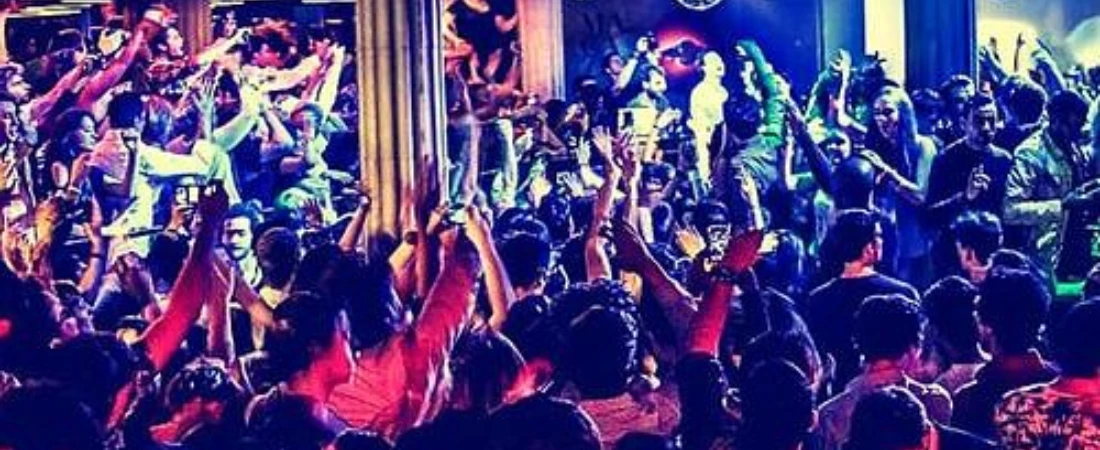
Lille may seem calm and historic by day, but when the sun sets, it transforms into a city full of electric energy and cultural rhythm. Thanks to its large student population, border-town personality, and love for beer and music, Lille’s nightlife scene is as dynamic as it is diverse.
Whether you're into craft beer bars, live jazz, underground techno, or just want to sip something good in a cozy café, Lille offers something for every kind of night owl.
Craft Beer Bars and Estaminets
Lille’s beer culture is rooted in its Flemish heritage. Many bars specialize in regional brews, with menus that include Belgian classics, local microbrews, and house specialties. These bars offer a cozy, informal setting to kick off the night with great conversation and even better drinks.
Top Spots:
- La Capsule (25 Rue des Trois Mollettes): One of Lille’s most beloved craft beer bars. It has a rotating selection of over 20 taps and dozens of bottled beers.
- Le Dandy (67 Rue Basse): Stylish yet relaxed with a carefully curated beer and cocktail list.
- Beer Square (Place de la Gare): Convenient for travelers and a fun stop with lots of variety.
- Les 3 Brasseurs (22 Place de la Gare): Brewpub with house-made beers and hearty food, great for groups.
Tip: Ask the bartender for regional beers like Page 24, Anosteké, or La Ch’ti if you want a truly northern French experience.
Wine Bars & Speakeasies
Lille also has an elegant side, with intimate wine bars, creative cocktail spots, and a growing list of hidden speakeasies for those who prefer refinement over rowdiness.
Recommended Venues:
- L’Illustration (Rue Royale): A calm and beautifully lit wine bar with natural wines and delicious tapas.
- Le Joker (29 Place Louise de Bettignies): Known for its artistic cocktails and relaxed, jazzy interior.
- Dernier Bar Avant la Fin du Monde (12 Rue de Pas): A nerd-themed bar mixing board games, sci-fi cocktails, and a warm, alternative crowd.
- Le Détour: Hidden near Rue de Gand, this secret bar behind an unmarked door offers a speakeasy vibe with seasonal drinks.
Live Music and Concert Venues
Lille has long been a hub for music lovers. The city’s concert venues range from massive arenas to intimate jazz clubs and indie dives. Whether you're into pop, rock, electronic, or world music, there's always something on.
Key Venues:
- L’Aéronef (168 Rue de Paris): Lille’s top mid-sized concert hall, hosting everything from international rock acts to electronic music and hip-hop.
- Le Splendid (1 Bd Jean-Baptiste Lebas): Historic venue with a rotating lineup of live music, stand-up, and cultural events.
- La Bulle Café (inside Maison Folie de Moulins): A community spot for jazz nights, poetry readings, and eclectic performances.
- Le Biplan (19 Rue Colbert): An underground gem with indie music, open mic nights, and student-friendly vibes.
Clubbing & Dance Floors
While not as wild as Paris or Berlin, Lille has a solid club scene, especially in the areas near the universities and Wazemmes. From electronic to reggaeton, there’s no shortage of places to dance the night away.
Best Clubs:
- Magazine Club (84 Rue de Trévise): Lille’s premier spot for electronic, techno, and house music. Minimalist interiors with maximal beats.
- Le Network (15 Rue du Faisan): A LGBTQ+ friendly club known for themed nights, drag shows, and a mixed, open-minded crowd.
- Smile Club: Popular with students, especially on Thursdays, when the nightlife buzz is at its peak.
Dress Code Tip: Most clubs are casual, but it’s best to avoid overly sporty clothes or flip-flops if you want to be safe for entry.
Cultural Cafés & Night Galleries
Not every night out needs to involve dancing or drinking. Lille is full of places where culture and nightlife mix, such as cafés that host book readings, art performances, indie film screenings, or casual debates.
Try:
- Café Citoyen (7 Place du Vieux Marché aux Chevaux): An activist-minded café with talks, slam poetry, board games, and an environmentally conscious menu.
- Le Bleu Café: Known for poetry nights and cozy conversation.
- Gare Saint Sauveur (Bd Jean-Baptiste Lebas): During art festivals or exhibitions, it often stays open late and includes food stalls, light installations, or silent discos.
Student Nightlife & Budget Bars
With over 100,000 students, Lille is packed with affordable nightlife. The areas around Rue Masséna, Rue Solférino, and Place de Béthune are hotspots, especially from Wednesday to Saturday.
Popular Hangouts:
- Le Palais de la Bière: Great beer deals and a friendly crowd.
- Le Privilège: Known for low-cost cocktails and good vibes.
- Le Bar Parallèle: Funky student spot for themed nights and cheap drinks.
Expect a lively, buzzing atmosphere until the early hours, especially when university is in session.
Theater, Opera & Dance
Lille is as much about performance art as it is about music and drinks. If you’re in the mood for something more refined:
- Opéra de Lille (Rue des Bons Enfants): Classical concerts, ballet, and opera in an ornate 19th-century venue.
- Théâtre du Nord (Grand Place): French-language productions of classical and contemporary plays.
- Maison Folie Wazemmes & Moulins: Reimagined cultural spaces hosting experimental theater, circus acts, and dance showcases.
Some performances include English subtitles or are non-verbal, making them accessible even to non-French speakers.
Seasonal Nighttime Events
La Nuit des Musées (May)
An annual event where museums stay open late, offering free access and special guided tours, concerts, and art installations.
Lille 3000 – Night Events
Every few years, during the Lille 3000 festival, the city hosts spectacular night parades, light shows, and open-air concerts that stretch into the early hours.
Christmas Season
The whole city lights up. The Grand Place Ferris wheel, holiday markets, and late-night chocolate shops make the city magical after dark.
Safety and Transport at Night
Lille is generally safe at night, especially in busy areas like Vieux-Lille and around the Grand Place. However, some nightlife zones can get rowdy, particularly late on weekends. Standard urban awareness applies: watch your belongings and avoid overly dark alleys alone.
Getting Around:
- Metro runs until midnight on weekdays and around 1 am on weekends.
- V'Lille bikes and taxis are easy to find in central areas.
- Night buses operate during big events or festivals, though not every day.
Nature, Parks & Outdoor Experiences in Lille

While Lille is known for its art, architecture, and vibrant city culture, it also offers plenty of green spaces and serene spots for nature lovers and anyone looking to unwind outdoors. Scattered across the city and its surrounding neighborhoods, you'll find urban parks, botanical gardens, riverside paths, and quiet courtyards—perfect for picnics, walks, jogging, or just taking in the northern French air.
In a city with such a strong industrial and cultural past, these natural areas provide a refreshing contrast and are well integrated into everyday life.
Citadel Park (Parc de la Citadelle)
Address: Avenue Mathias Delobel, 59800 Lille
This is Lille’s largest and most iconic green space, often referred to as the city’s green lung. Located just northwest of the city center, Parc de la Citadelle covers over 110 hectares and surrounds the 17th-century Citadel of Lille, a pentagon-shaped fortress built by Louis XIV’s famed architect Vauban.
What to Do:
- Walk or bike the moat paths around the Citadel walls
- Enjoy the large woodland and open lawns for picnics
- Rent paddle boats or explore kids' playgrounds
- Visit the free zoo, home to monkeys, birds, goats, and exotic species
Insider Tip: Early mornings are peaceful and ideal for joggers. On weekends, expect families, dog-walkers, and street performers near the zoo.
Jardin des Plantes
Address: Rue du Jardin des Plantes, 59000 Lille
The Jardin des Plantes is a botanical garden located in the southern part of Lille. It’s lesser-known to tourists, which makes it perfect for a quiet stroll or a study session under the trees.
Features:
- Over 1,500 species of plants
- Greenhouses with tropical and desert plants
- A small arboretum
- Colorful seasonal flowerbeds
Great for photographers, nature enthusiasts, and anyone looking for a peaceful place to recharge. Educational events are sometimes held here, especially in spring and summer.
Deûle Canal & River Walks
The Canal de la Deûle snakes its way through Lille and offers peaceful walking and cycling routes lined with trees and dotted with boats, swans, and riverside cafés.
Best Starting Points:
- Quai de Wault, near the Citadel
- Bois Blancs, further west of the city
- The area near La Gare Saint Sauveur, connecting trails and urban greenways
Activities:
- Walk or cycle along the Deûle River Greenway
- Stop at small parks along the way
- Watch rowing teams practice in the mornings
- Pack a lunch and enjoy a canal-side picnic
Tip: V’Lille bike stations are located along the route, making it easy to start and stop anywhere.
Vauban Garden (Jardin Vauban)
Address: Boulevard Vauban, 59800 Lille
This 19th-century English-style garden sits close to the university district and feels like a tranquil oasis despite its central location.
Highlights:
- A romantic grotto and waterfall
- Cast-iron gazebo and benches
- Flowerbeds and seasonal blooms
- Popular with students, readers, and people on lunch breaks
Bring a book or a sketchpad—Jardin Vauban is ideal for slow, peaceful afternoons in the shade.
Parc Jean-Baptiste Lebas
Address: Boulevard Jean-Baptiste Lebas, 59000 Lille
Once a military site, this park has been transformed into a modern green space just steps from the Gare Saint Sauveur. Its distinctive red fence makes it easy to spot.
Key Features:
- Large open lawns with bean bags and lounge chairs (often provided in warm weather)
- Urban sports areas for basketball and skating
- Family-friendly playgrounds and shaded walkways
- Close proximity to cultural events at the nearby Saint Sauveur station
This is the park for urban relaxation, especially after visiting art installations or concerts at the Gare.
La Citadelle Zoo
Address: Avenue Mathias Delobel, inside Parc de la Citadelle
While not a full-scale zoo, Lille’s small and charming zoo is free and well-maintained, especially popular with families.
What to Expect:
- Over 400 animals including monkeys, zebras, red pandas, and exotic birds
- Informational signs and animal conservation education
- Petting areas for younger children
- Nearby snack stalls and toilets
Hours: Usually open daily from March to November (check local schedule).
Bois de Boulogne & Surroundings
Adjacent to the Citadel, the Bois de Boulogne forms a wooded area perfect for trail running, cycling, or just getting lost in nature without leaving the city. It connects with the Deûle canal and the broader Lille Métropole greenway.
If you're staying a bit longer in Lille and want to explore less touristy nature areas, the woods and connected paths are great places to escape.
Outdoor Sports & Recreation
Lille’s parks and green areas are sports-friendly, with zones for casual and organized activities. You’ll find:
- Public ping pong tables
- Tennis courts
- Urban gyms and workout stations
- Skate parks and basketball courts
Parc Lebas and Citadel Park are hotspots for group yoga classes, tai chi, and occasional boot camps.
Bike Culture & V’Lille Rental System
Lille is a bike-friendly city, with dedicated lanes and a solid bike-sharing system called V’Lille.
How It Works:
- Rent from hundreds of docking stations city-wide
- 1-day or 7-day passes are available for visitors
- First 30 minutes of each ride are usually free
Biking along the Deûle River, through Citadel Park, or across bridges in Bois Blancs is one of the best ways to explore Lille’s outdoor side.
Seasonal Events & Open-Air Culture
Spring & Summer:
- Pop-up cinemas in parks like Vauban or Lebas
- Outdoor yoga sessions and wellness mornings
- Food trucks and music events along the canal
Fall:
- Nature walks and leaf-hunting in Vauban or Bois de Boulogne
- Scenic photo opportunities with golden trees and reflections in the river
Winter:
- Christmas Market rides and decorations in Grand Place
- Crisp canal walks under fairy lights and winter skies
- Even in colder months, Lille’s parks offer a refreshing contrast to city life.
How to Get Around in Lille
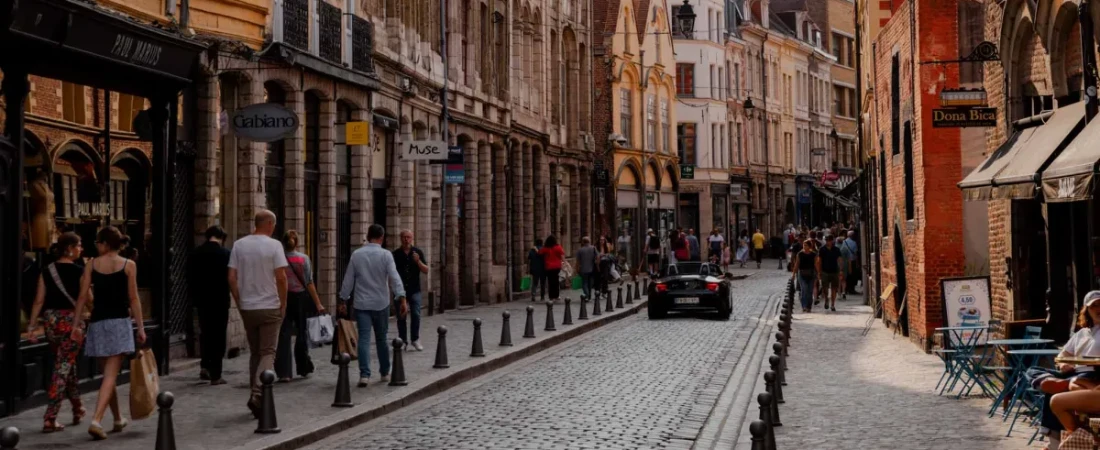
Lille is a compact, accessible city with a highly efficient transport system that makes exploring both the city center and its outskirts a breeze. Whether you're here for a weekend or an extended stay, getting around is stress-free, thanks to a well-connected metro, clean trams, reliable buses, and a bike-sharing system that encourages eco-friendly travel.
With most major sights located within walking distance, Lille is also a very walkable city, especially in the historic Old Town where charming alleys, cobbled streets, and narrow lanes dominate the landscape. Here’s your complete guide to moving around Lille with ease.
Public Transport in Lille: Overview
Lille's public transportation network is run by Ilévia, which includes:
- Metro (2 lines)
- Trams (2 lines)
- Buses (60+ routes)
Tickets work across all modes and can be purchased from machines in metro stations or bus stops. You can use the same ticket to transfer between metro, tram, or bus within an hour of first validation.
Ticket Options:
- Solo (one trip): €1.80
- 10-trip booklet: €16.50
- 1-day pass: €5.30 (unlimited rides)
- 3-day pass: €13.90
- 7-day pass: €17
Tip: If you're staying more than a day and plan to move around, the 1- or 3-day pass offers excellent value.
Lille Metro System
Lille’s metro is compact, automated (driverless), and incredibly efficient. It was the first automatic metro in the world, launched in 1983.
Lines:
- Line 1 (Yellow): Connects CHR B Calmette to 4 Cantons – Stade Pierre-Mauroy. Key stops include Gare Lille-Flandres, République Beaux-Arts, Porte de Douai.
- Line 2 (Red): Runs from Lomme to Tourcoing and Roubaix. Important for reaching Grand Palais, Roubaix, and Villeneuve-d’Ascq.
Frequency:
- Every 1-2 minutes during peak hours
- Every 3-5 minutes off-peak
- Operating hours: 5:00 AM – 12:30 AM (varies slightly by line)
The stations are clean, safe, and easy to navigate. English signage is limited, but easy-to-understand maps and color-coded lines help travelers find their way.
Trams: Lille to Roubaix and Tourcoing
Lille’s tram system (nicknamed the "Mongy") runs two main lines:
- Line R (to Roubaix)
- Line T (to Tourcoing)
Both lines begin from Gare Lille-Flandres and travel northeast, offering a comfortable ride through suburban neighborhoods. The trams are sleek, punctual, and offer great views of the northern countryside as you leave central Lille.
Perfect for:
- Reaching La Piscine Museum in Roubaix
- Exploring the border towns
- Day trips without the need for a car
Buses: Going Local
Lille has an extensive bus network, useful for reaching areas not served by metro or tram, especially residential neighborhoods and surrounding towns.
Buses are modern, well-kept, and offer electronic screens showing the next stops. Some of the main tourist lines include:
- L5: Runs between Lille center and the east suburbs
- Citadine Lines: Short lines that loop around the city center for free or at reduced rates (check schedules locally)
Note: Buses run less frequently on Sundays and holidays.
V’Lille – City Bike Rentals
Lille is a bike-friendly city with over 400 km of dedicated bike lanes and a very popular bike-sharing system called V’Lille.
How it Works:
- Stations are scattered across the city and suburbs.
- Short-term rental plans (1 day or 7 days) are available at terminals or online.
- The first 30 minutes of every ride are free.
You can return bikes at any station, making it perfect for sightseeing or errands.
Pricing:
- 1-day pass: €1.70
- 7-day pass: €7.50
- Additional time costs apply after the free 30-minute window.
Biking is particularly enjoyable around the Citadel Park, along the Deûle Canal, and in the Bois Blancs and Vauban areas.
Walking Around Lille
Lille is exceptionally walkable, especially in the city center, Vieux-Lille, and Grand Place areas. Many key attractions, like:
- Palais des Beaux-Arts
- Old Stock Exchange
- Grand Place
- Rue de Béthune (shopping)
- Opéra de Lille
…are all within a 10–20 minute walk of each other.
Wear comfortable shoes, especially in Vieux-Lille where cobblestones are common.
Best walking routes:
- Grand Place to Palais des Beaux-Arts via Rue de Paris
- Citadel Park loop via Quai de Wault
- From Rue Royale to the Cathedral de la Treille
Day Trips by Train
- Lille is a major transport hub, with two train stations:
- Gare Lille-Flandres (regional and national trains)
- Gare Lille-Europe (high-speed TGV and Eurostar)
From these stations, you can easily plan day trips or overnight stays in northern France, Belgium, or even the UK.
Day Trips by Train:
- Bruges – 38 mins
- Brussels – 35 mins
- Ghent – 40 mins
- Paris – 1 hour
- Arras – 45 mins
- Roubaix & Tourcoing – 15–25 mins
Train stations are centrally located and well connected to the metro.
Taxis and Ride-Sharing
Taxis are available but not as common or necessary due to Lille’s excellent public transport.
- Official taxis can be found near stations and hotels
- Apps like Uber and Bolt are widely used and often more affordable
- Night travel by taxi is safe but can be more expensive after midnight
If you're arriving late from a concert or need an airport transfer, ride-sharing is usually your best bet.
Parking & Driving in Lille
Driving in Lille is not recommended for tourists, especially in Vieux-Lille, where streets are narrow and parking is limited.
If you plan to rent a car for travel outside Lille:
- Use public parking lots (Indigo, Effia) near stations and shopping centers
- Avoid driving during rush hours (8–9:30 AM, 5–7 PM)
- Consider park-and-ride lots (P+R) connected to metro stations
Accessibility & Mobility Tips
- Lille is increasingly accessible for travelers with disabilities or mobility issues:
- Most metro stations and public transport are wheelchair-accessible
- Wide pedestrian zones in the city center
- Audio/visual cues on buses and metro for hearing or sight-impaired passengers
- Elevators and ramps in public buildings and cultural sites
You can request transport assistance from Ilévia or SNCF when traveling by train.
Final Thoughts: Getting Around Is Part of the Lille Experience
Whether you're hopping on a historic tram to Roubaix, cycling along a canal path, or strolling through Grand Place under glowing streetlights, moving through Lille is more than practical—it’s part of the charm.
With clear signage, multilingual support, and affordable passes, Lille’s transit system helps you explore at your own pace, with freedom and flexibility. Combine that with the city’s walkability and biking culture, and you'll find that getting around Lille is easy, enjoyable, and efficient



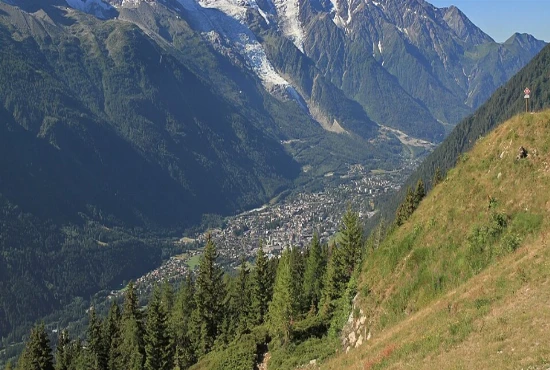
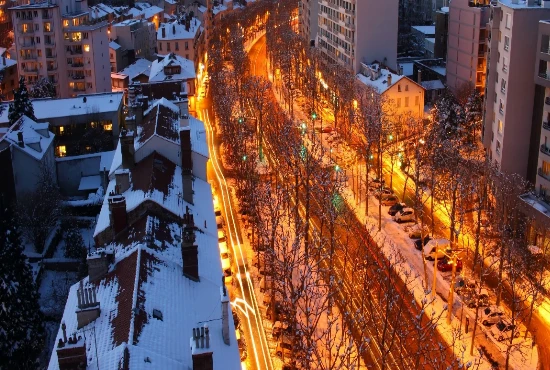

Leave a Reply